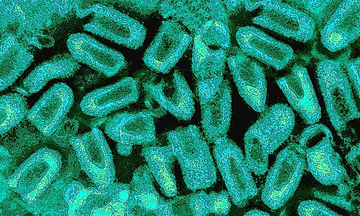Answer:
Asthma (bronchial asthma) is a chronic respiratory disease, specifically characterized by airway inflammation, swelling, and constriction that makes breathing difficult. Symptoms can fluctuate unpredictably (feeling well during the day but experiencing difficulty breathing at night) and recur frequently.
Asthma is broadly classified into two main types: extrinsic asthma (related to allergies) and intrinsic asthma (not related to allergies). Extrinsic asthma usually begins in childhood and may be accompanied by other allergic conditions such as eczema, allergic rhinitis and sinusitis, food allergies, sensitivities to odors, pollen, dust mites, and more. This type of asthma can have a hereditary component (inheritance of an allergic predisposition). Children of individuals with allergic asthma may also develop allergic diseases, including asthma. While their likelihood of developing asthma is about 3 to 6 times higher than average, it doesn't guarantee they will develop the condition.
Intrinsic asthma, unrelated to allergies, typically develops in adulthood. Its causes are more complex and can include factors such as respiratory infections, psychological stress, hormonal changes, or medication side effects. Despite the absence of a clear "allergic predisposition," intrinsic asthma can still have a genetic link. Certain genes are associated with the mechanisms of inflammation and airway hyper-reactivity, and these genes can be inherited.
 |
Doctor Hanh examines a patient. Photo: Tam Anh General Hospital |
Doctor Hanh examines a patient. Photo: Tam Anh General Hospital
While asthma isn't directly inherited from parents to children, having a family history of asthma or allergies increases the risk. Environmental factors, such as smoke, dust, pollution, and weather, play a significant role in whether the disease manifests.
Children who experience severe or recurrent respiratory infections, especially in their early years, may develop asthma later in life. Exposure to irritants like industrial dust, fine particulate matter, smoke, chemical fumes, mold, and industrial emissions, as well as tobacco smoke, can significantly irritate the respiratory tract and increase the risk of developing asthma.
Children whose mothers smoked during pregnancy or who live in smoke-filled environments are also more susceptible to asthma. Being overweight or obese is also considered a risk factor. In these individuals, asthma often presents more severely and is harder to manage.
Regarding treatment, asthma cannot be completely cured. However, with advancements in medicine, it can be effectively managed through appropriate treatments and lifestyle changes. Individuals with asthma who adhere to their treatment plans can achieve a quality of life comparable to those without the condition. Those at risk of developing asthma should avoid smoke, pollution, and allergens, maintain a healthy lifestyle, manage their weight, and undergo regular health checkups to reduce the risk of onset or exacerbation.
MSc. MD. Specialist II Nguyen Thi My Hanh
Respiratory Unit
Tam Anh General Clinic, District 7
| Readers can submit questions about respiratory diseases here for doctors to answer. |












